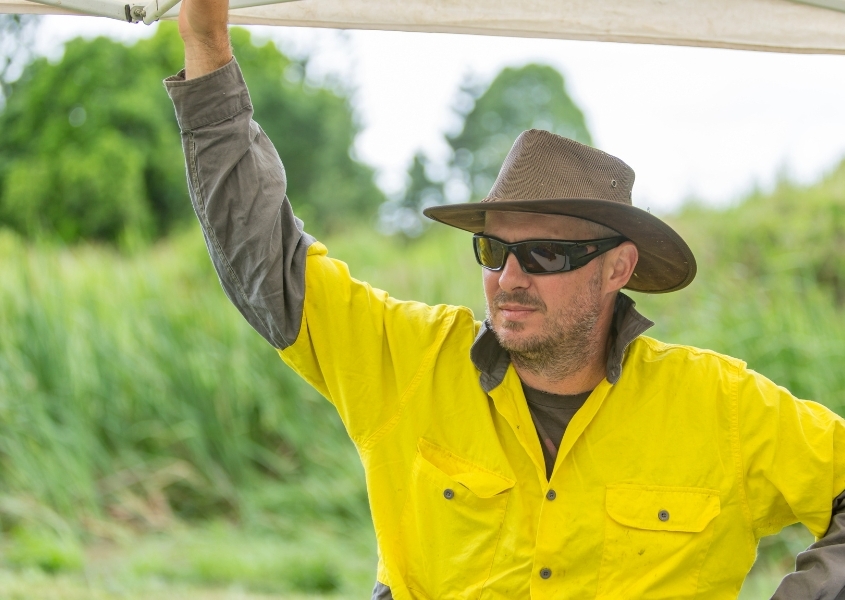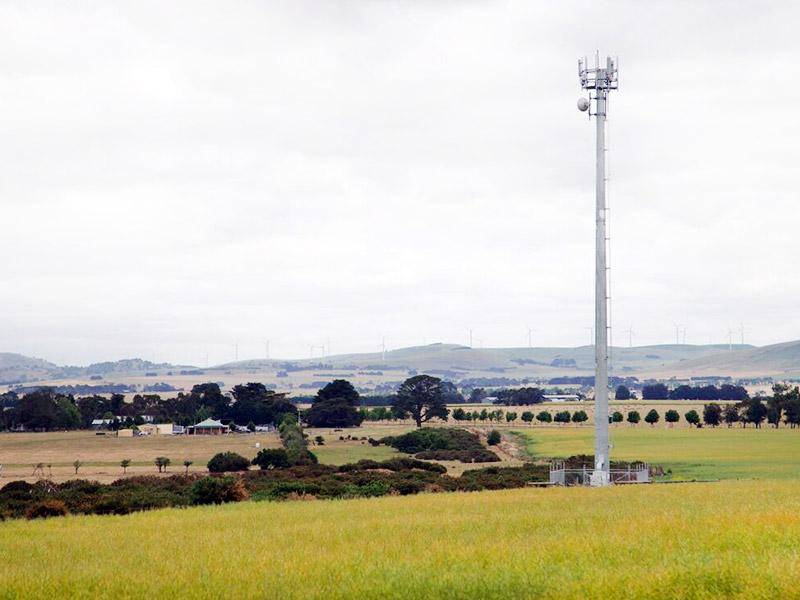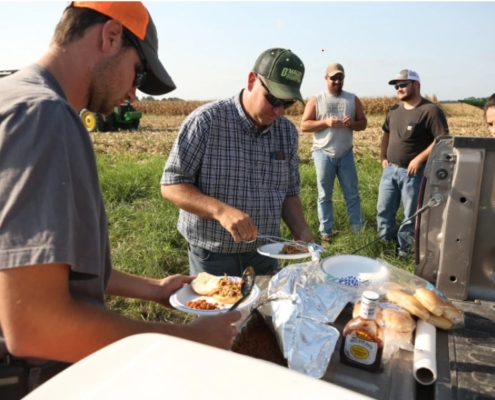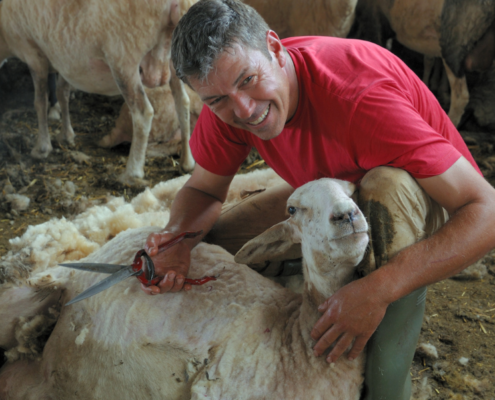Transitions are an inevitable part of any farm operation. Employees move on for a variety of reasons—new job opportunities, family circumstances, or employer decisions. Whatever the reason, the period between the decision to leave and the actual departure can be a tricky and sensitive time. Managers often struggle with maintaining motivation levels, while departing employees may feel disconnected or even disinterested in their remaining responsibilities.
This blog addresses how to make the most of such transitions, ensuring a smooth handover, minimising disruptions, and preserving a positive team culture. We’ll cover both farm managers’ and farmhands’ roles in this process, with actionable steps to turn potential friction into an opportunity for growth.
The Opportunity Hidden in Transitions
The notice period can feel awkward. Employees might become less motivated, and managers may feel uncertain about what they can expect from someone who’s already got one foot out the door. But this period also represents an opportunity. For farm managers, it’s the time to assess which tasks are heavily reliant on the outgoing employee and to establish systems that will ensure continuity.
For farmhands, it’s a chance to leave a positive mark by sharing the knowledge they’ve gained, making it easier for others to take over their responsibilities, and preserving the farm’s productivity and culture even after they’ve moved on.
Proactive Management During Transitions
To manage the challenges that arise when a team member is about to leave, proactive steps can make all the difference:
- Identify Critical Responsibilities
Take a good look at the tasks the departing employee is handling. Are there specific areas where the farm is too reliant on this individual? Now is the time to create a plan to distribute these tasks among the remaining team members. - Document Processes
Encourage departing employees to document their daily activities, processes, and unique know-how about the tasks they have been handling. This documentation will become a crucial training resource for those stepping into their roles. - Structured Knowledge Transfer
Once the documentation is complete, plan training sessions. Depending on the farm’s needs, different responsibilities might be assigned to different people, making training more efficient. This ensures that responsibilities are properly covered and reduces confusion once the employee leaves.

Dealing with Notice Period Friction
Despite the best efforts, notice periods can become tense. When employees feel disconnected, they might start taking excessive leave or fail to fulfil their duties diligently. If friction arises, consider these actions:
- Assess the Impact on the Team
A disengaged employee can affect the morale of the entire team. Managers should assess whether keeping the employee through their notice period is beneficial. If not, it may be better to release them early while still compensating them for the remainder of their notice, following Fair Work guidelines or with advice from an external HR advisor. - Maintain a Positive Reference Relationship
Encourage departing employees to maintain a good relationship even as they exit. The value of a positive reference cannot be understated, and employees who leave respectfully can count on their former employers for future recommendations. This goodwill also reflects well on the farm, contributing to a positive reputation in the wider agricultural community.
Creating a Lasting Legacy Through Open Communication
As a farm manager, starting the notice period with an open, honest conversation can set the tone for a smoother transition. Use a checklist to guide your discussion with the departing employee, focusing on how you can support each other during this time. Emphasise the importance of leaving a lasting legacy by encouraging them to exceed their past performance—this is an opportunity for them to leave a meaningful mark. By connecting emotionally and understanding their perspective, you can inspire loyalty and ensure they feel valued even in their final days. Regular weekly check-ins allow you to monitor progress, provide guidance, and address any areas where reinforcement or encouragement may be needed. Remember, this is about leaving a positive legacy that reflects both the employee’s contributions and the farm’s standards.
The Farmhand’s Responsibility
From the farmhand’s perspective, leaving a job gracefully is crucial for their professional reputation. Here are a few key practices for farmhands during the notice period:
- Systemise Your Role
Pass on your knowledge clearly and comprehensively to ensure your responsibilities can be picked up seamlessly. - Respectful Communication
Be open with feedback—both what worked well and what could improve. Deliver feedback constructively to help the team thrive even after you leave. - Leave a Lasting Positive Impression
The way you leave a job reflects your personality and professionalism. Even if loyalty doesn’t mean staying forever, demonstrating a commitment to the farm’s well-being until the last day shows true character.
Make Transitions Effective: Follow this Employee Transition Checklist (Available for Download)
For Farm Managers:
- Identify critical tasks dependent on the departing employee.
- Have the departing employee document their processes.
- Facilitate training sessions to ensure a smooth handover.
- Maintain open communication with the team to gauge morale.
For Departing Farmhands:
- Document your daily tasks and important knowledge.
- Assist in training your replacement or team members taking over your tasks.
- Provide constructive feedback to both managers and team members.
- Strive to leave a positive legacy within the farm.
Understanding Employee Loyalty in Modern Times
Farm owners need to adapt to changing norms. Long-term loyalty, like the expectation that employees stay for ten or more years, is increasingly rare. Instead, loyalty can be demonstrated in different ways: through how an employee helps with transitions, promotes the farm’s culture, or supports new team members even after leaving.
The concept of “adult daycare” may sound blunt, but it speaks to the evolving role of businesses as places of growth, where people come in, contribute, evolve, and eventually move on. Accepting this as part of the farming business model will allow for smoother transitions and less friction during those inevitable periods of change.
Transitions are a natural part of farm life, but they don’t have to disrupt your operations or team morale. With the right strategies, you can turn employee departures into opportunities for growth and improvement. Ready to take the next step? Access our Employee Transition Checklist to guide you in building a resilient, well-prepared farm team. Let Enable Ag help you create a sustainable, motivated workforce that thrives through change.
If you found this article helpful, share it with your network to help others unlock their farming potential. Don’t forget to like and follow us on social media for more insightful tips: Facebook, Instagram, and LinkedIn. Let’s empower more farmers together!

 Enable Ag
Enable Ag Enable Ag
Enable Ag
 Enable Ag
Enable Ag




